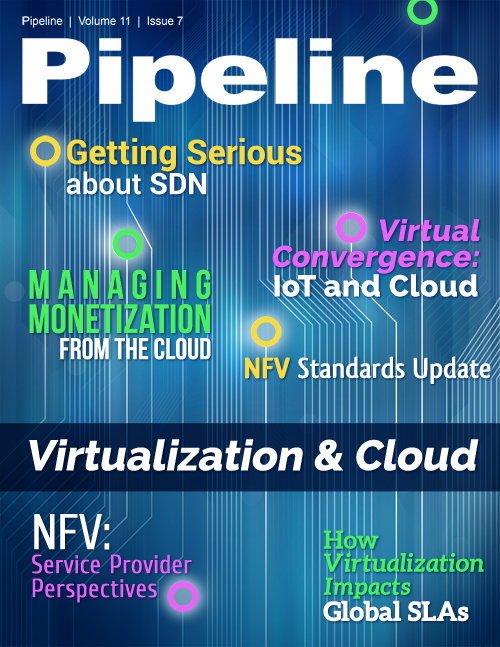Service Provider Perspectives on NFV Business Cases and Plans
Progress Towards A Strong NFV Business Case
Two-thirds of respondents have strong insights into what an NFV business case would look like. Nearly half (44 percent) have already developed, or are in the middle of developing, a business case, with a further fifth of the sample starting to do so. Only five respondents say they are not yet ready to look at a business case.Most Important Benefits of NFV
The recipients were asked to rank the three most important potential benefits of NFV to their company. At this stage of NFV implementation, operators are most concerned with being able to launch functions quickly wherever they are needed in the network, not to migrate them from location to location.
For this, operators need a consistent Commercial Off-the-Shelf (COTS)-based Network Functions Virtualization Infrastructure (NFVI) into which they can drop or remove functions and reuse the NFVI. Because the functions are virtualized in software, there is no need for long hardware procurement cycles or truck rolls, offering flexibility and time-to-market business benefits.
There is a distinct desire among respondents to reduce costs and use cost as one of the top factors in determining where Virtual Network Functions (VNFs) should run in their infrastructures. As one of the interviewees in an operator’s office of the CTO explained, “There is a clear business case today for cutting operational cost by as much as 50 percent through automation. We have very encouraging figures from other parts of the business which have investigated this and they are much better than our original projections.”
The third most important cited benefit of NFV was lowering the cost of network management through greater automation.
Business Metrics
The most advanced operators investigating NFV understand the importance of business metrics. Nearly half of the sample (48 percent) plan to incorporate business metrics (typically coarse-grained) in their business cases and use them to determine where to instantiate or move VNFs. The current interest leans toward VNF instantiation rather than dynamic migration. The other half of the respondents are taking a wait-and-see approach – but they know they must watch closely.
Respondents ranked the following business benefits highly: just in time network planning and provisioning; improved financial control of network operations; proactive, cost-driven network management; and cost savings from improved energy efficiency.
Policy-Driven Cloud Orchestration
Cloud management is needed to automate and orchestrate provisioning processes, as well as virtual and traditional network functions, across domains while providing consistent levels of quality. It is important to recognize that next generation “cloud” services may be made up of components from various technology domains — at the minimum cloud and SDN, but often including other technologies as well. Product offers, with non-technology attributes, must also be managed. Consequently, orchestration is of necessity a multi-layer process: an end-to-end product and service layer that must orchestrate across multiple domains, with rich orchestration environments at the network and service layers. This results in a cohesive, flexible and extensible approach that delivers agility to all processes in the critical path, all the way from the technology up to the product.
Respondents leading the market show a marked inclination to use policy-driven cloud orchestration systems and are enthusiastic about automation. Nearly half of the sample (48 percent) expects to
use policy-driven placement, with the number rising to 56 percent for those who have already developed an NFV business case. The qualitative interviewees pointed out that the formulation of VNF
placement criteria in general is still in its early days, let alone using policies to drive their implementation.
Over half of the sample (53 percent) said they would trust the automation in a cloud orchestration system to implement policies. This level of trust is even higher in respondents that already have an NFV business case, with 65 percent saying that a high level of operational automation is important to their NFV business case. The relatively small number (24 percent) of respondents who would always want human involvement in such decisions suggests strong buy-in overall to the goals of cloud-based NFV.



















